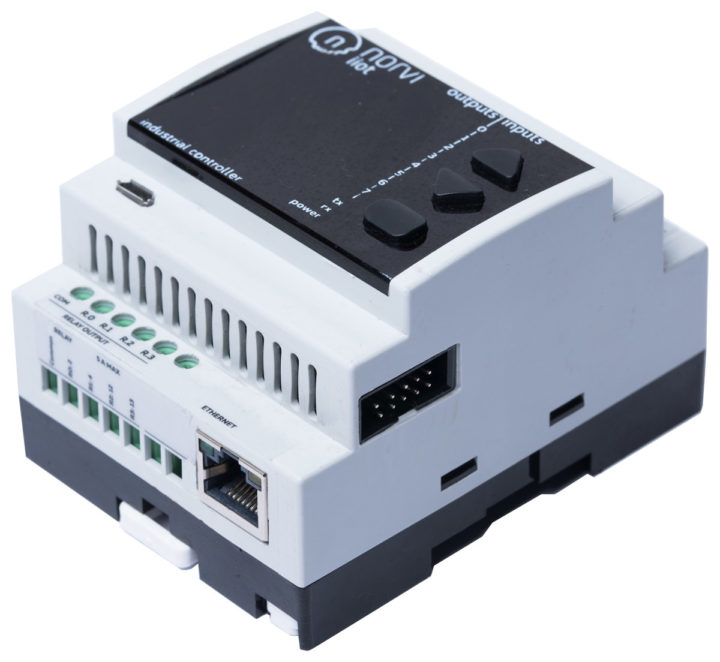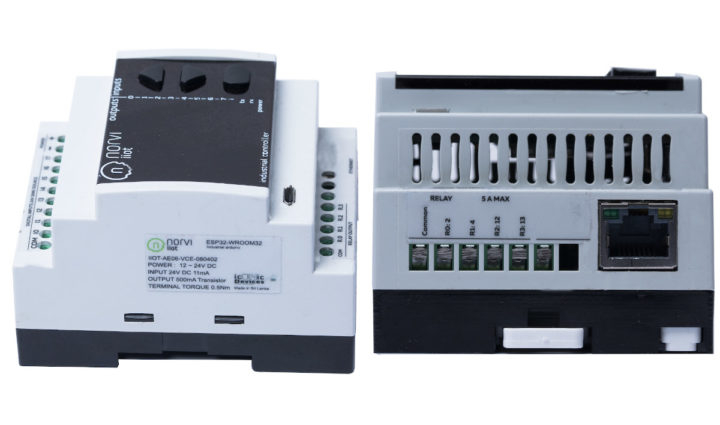Announced in 2019, NORVI IIOT industrial controller features an ESP32 WiFi and Bluetooth module, a choice of OLED or TFT Display, 24V DC input, and several analog and digital I/Os all housed in a DIN Rail enclosure.
Sri Lanka-based ICONIC DEVICES has now announced an updated version with NORVI ENET DIN-Rail ESP32 industrial gateway based on a similar design, but with the addition of an Ethernet port using W5500 SPI to Ethernet controller.
NORVI ENET (AE06) specifications:
- Wireless Module – ESP32-WROOM32 with ESP32 dual-core processor @ 160 MHz, 520 Kbytes SRAM / 4 Mbit Flash, WiFi 802.11 b/g/n, Bluetooth 4.2
- Storage – MicroSD card slot
- Display – Built-in 0.96″ OLED display
- Communication – 10/100M Ethernet via W5500 controller, WiFi, Bluetooth, optional LoRa or NB-IoT module
- I/Os
- 8x 24V digital inputs for rotary encoders, sensors
- AE06-R model only – 4x 5A relay outputs for solenoid valves, contactors
- AE06-T model only – 4x open collector high-speed transistors (PWM or PULSE outputs)
- AE06-V model only – 4x 0 to 10V analog inputs
- AE06-I model only – 4x 2-20mA analog inputs
- Misc
- Power, status, and I/O LEDs
- DS3231 RTC with battery backup
- Optional MAX31856 temperature sensor
- Power Supply – 24V DC rated input via terminal block
- Power Consumption – 32.6 to 40.4 Watts with all outputs ON
- Dimensions – 90.50 x 56.60 x 60.60 mm (DIN-Rail mount)
- Weight – Around 430 grams
- Mounting
- Top hat type TH35-15 rail conforming to IEC 60715
- Top hat type TH35-7.5 rail conforming to IEC 60715
- Plate or panel with fixing kit
- Compliance – 2014/30/EU- Electromagnetic Compatibility (EMC)
Annex III, Part B, Module C

NORVI ENET ESP32 DIN-Rail industrial controller can be purchased through the aforelinked product page between $108 and $134 depending on the selected model.

Jean-Luc started CNX Software in 2010 as a part-time endeavor, before quitting his job as a software engineering manager, and starting to write daily news, and reviews full time later in 2011.
Support CNX Software! Donate via cryptocurrencies, become a Patron on Patreon, or purchase goods on Amazon or Aliexpress




